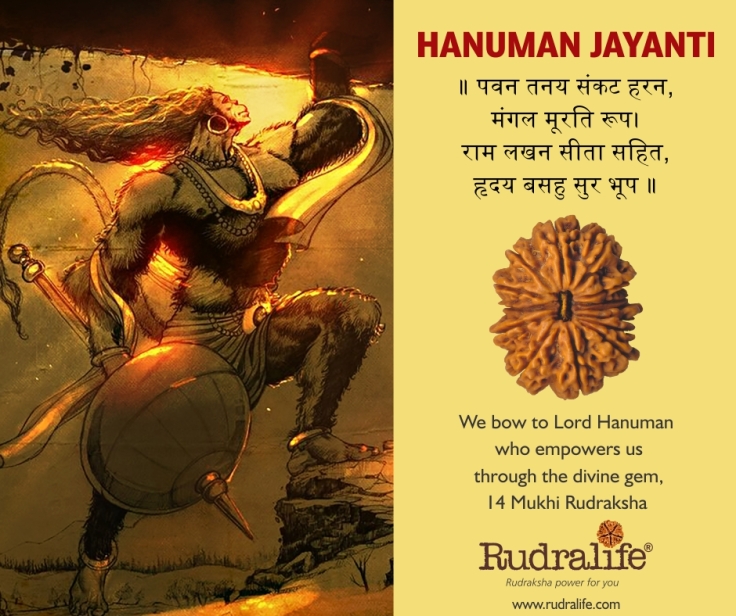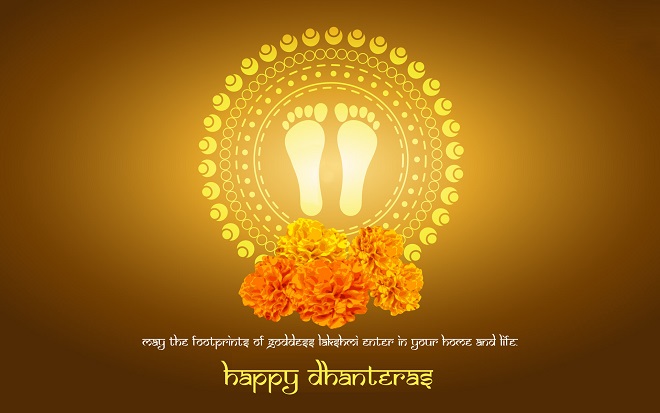Gudi Padva (Marathi: गुढी पाडवा Gudī Pāḍavā also known as Ugadi in Telugu), is the Marathi name for Chaitra Shukla Pratipada. It is celebrated on the first day of the Chaitra month to mark the beginning of the New Year according to the Luni – Solar Hindu calendar. This day is also the first day of Chaitra Navratri and Ghatasthapana; also known as Kalash Sthapana, is done on this day. The practice of raising the Gudi was started by Shivaji Maharaj to welcome the New Year and symbolizes victory “Vijay Dhwaj”. Since then this culture of raising Gudi’s has been followed in and around the strong holds of the Maratha kingdom.
In south India, first day of the bright phase of the moon is called pāḍya. Konkani Hindus variously refer to the day as संसरपाडवो or संसरपाड्यॆ (saṁsāra ‘pāḍavo/ saṁsāra pāḍye) संसार (saṁsāra) being a corruption of the word संवत्सर (saṁvatsara). Konkani Hindus in Karnataka also refer to it as उगादि, ಯುಗಾದಿ(ugādi).
Gudi Padva in other States Known as Guḍī Pāḍavā (“Gudhee Paadavaa”) in Maharashtra, this festival is also known as
- Samvatsar Padvo among Hindu Konkanis of Goa and Konkani diaspora in Kerala.
- Yugadi among the rest of Konkani diaspora in Karnataka and Ugadi in Andhra Pradesh and Navreh or Navreh amongst Kashmiri Pandits.
In other parts of India this festival is celebrated during :
- Ugadi in Andhra Pradesh.
- Yugadi in Karnataka.
- Cheti Chand among the Sindhi people.
In Indonesia is the day is celebrated Balinese New Year . One of the important days in Bali, Indonesia is Nyepi , the Balinese New Year. It is without doubt one of the quietest New Year Celebration on Earth.The date of this unique day of silence alters depending on the Balinese Calendar , the Saka, which is 78 years behind the Gregorian calendar and follows a lunar sequence.
Astronomical
This new moon day has special meaning from Astronomy point of view. The Sun is supposed to be in first point of Aries, which is first sign of Zodiac and is a natural beginning of Spring. Many civilizations have known this. People of ancient Egypt knew this and Nowruz (literally New Day) in Persia is also based on this observation. The Sun however may not be exactly in Aries due to Lunar month. This is adjusted by adding an “Adhik” (Literally an extra) Lunar month every three years to ensure New Year Day (Gudhee Padwa) indeed matches observed season.
Agricultural
India is a predominantly agrarian society. Thus celebrations and festivals are often linked to the turn of the season and to the sowing and reaping of crops. This day marks the end of one agricultural harvest and the beginning of a new one. In this context, the Gudi Padwa is celebrated at the end of the Rabi season.
Historical
This day also commemorates the commencement of the Shaka calendar after Gautami Putra Satakarni, also known as Shalivahan defeated Sakas in battle in 78 A.D.
Religious
According to the Brahma Purana, this was the day in which Lord Brahma created the universe after Pralaya and the Kaal (Time) began its march from this day onwards.
Seasonal
On this day, the sun assumes a position above the point of intersection of the equator and the meridians. According to the Hindu calendar, this marks the commencement of the Vasanta Ritu or the spring season.
Gudi
On Guḍī Paḍava, a gudi is found sticking out of a window or otherwise prominently displayed in traditional Maharashtrian households. Bright green or yellow cloth adorned with brocade (zari) tied to the tip of a long bamboo over which gaathi (sugar crystals), neem leaves, a twig of mango leaves and a garland of red flowers is tied. A silver or copper pot is placed in the inverted position over it. Altogether, it is called as Gudi. It is hoisted outside the house, in a window, terrace or a high place so that everybody can see it.
Some of the significances attributed to raising a Gudi are as follows:
- Maharashtrians also see the Gudi as a symbol of victory associated with the conquests of the Maratha forces led by Chhatrapati Shivaji. It also symbolizes the victory of King Shalivahana over Sakas and was hoisted by his people when he returned to Paithan.
- Gudi symbolizes the Brahmadhvaj (Brahma’s flag) mentioned in the Brahma Purana, because Lord Brahma created the universe on this day. It may also represent Indradhvaj (the flag of Indra).
- Mythologically, the Gudi symbolizes Lord Rama’s victory and happiness on returning to Ayodhya after slaying Ravana. Since a symbol of victory is always held high, so is the gudi (flag). It is believed that this festival is celebrated to commemorate the coronation of Rama; post his return to Ayodhya after completing 14 years of exile. So, people celebrated victory of lord Rama every year by raising Gudi. The Gudi is said to ward off evil, usher in prosperity and good luck into the house.
- The Gudi is positioned on the right side of the main entrance of the house. The right side symbolizes active state of the soul.
Rangoli
On the festive day, courtyards in village houses will be swept clean and plastered with fresh cow-dung. Even in the city, people take the time out to do some spring cleaning. On this day, people young and old begin their day with a holy bath and wear new clothes. Those who reside in the villages choose to take a dip in a sacred river next to the local temple. This ritual is meant to cleanse their bodies and souls and prepare them for a new dawn.
Traditionally, Maharashtrian women wear a kashta or a nauvari — a nine-yard saree tucked at the back, while the men are dressed in a kurta pyjama and sport a saffron or red turban. Women and children work on intricate rangoli designs on their doorsteps, the vibrant colours mirroring the burst of colour associated with spring. Everyone dresses up in new clothes and it is a time for family gatherings.
Traditionally, families are supposed to begin the festivities by eating the bittersweet leaves of the neem tree. Sometimes, a paste of neem leaves is prepared and mixed with dhane, gul/gur (jaggery), and tamarind. All the members of the family consume this paste, which is believed to purify the blood and strengthen the body’s immune system against diseases.
Maharashtrian families also make shrikhand and Poori or Puran Poli on this day. Konkanis make Kanangachi Kheer, a variety of Kheer made of sweet potato, coconut milk, jaggery, rice flour, etc.
Ugadi Panchanga Sravanam
On this day mantras are chanted and predictions made for the New Year. Later, people traditionally gather to listen to the recitation of the religious Panchanga of the coming year, and to the general forecast of the year to come. This is the Panchanga Sravanam, an informal social function where an elderly and respected person open the new Panchagam pertaining to the coming year and makes a general benediction to all present. Ugadi celebrations are marked by literary discussions, poetry recitations and recognition of authors of literary works through awards and cultural programmes. Recitals of classical Carnatic music and dance are held in the evenings.
 Hanuman was an avatar of lord Shiva who appeared to help lord Rama in the Ramayana. He was strong, intelligent and unconditionally devoted to lord Rama. When Raavana abducted Sita and imprisoned her in Lanka, Hanuman went in search of her . After crossing and leaping over the ocean he reached Lanka, found her and gave her lord Rama’s ring . He burnt half of Lanka with his tail ; wreaking havoc before returning to lord Rama. Hanuman had assisted him in finding his wife, building the bridge to reach Lanka, slaying Rakshasas, reviving Laxmana by providing Sanjeevini and ensuring that Sita is returned safely to his lord Rama. Rama dooth, Pavan Putra, Maruti and Sankatmochan were some of his names.
Hanuman was an avatar of lord Shiva who appeared to help lord Rama in the Ramayana. He was strong, intelligent and unconditionally devoted to lord Rama. When Raavana abducted Sita and imprisoned her in Lanka, Hanuman went in search of her . After crossing and leaping over the ocean he reached Lanka, found her and gave her lord Rama’s ring . He burnt half of Lanka with his tail ; wreaking havoc before returning to lord Rama. Hanuman had assisted him in finding his wife, building the bridge to reach Lanka, slaying Rakshasas, reviving Laxmana by providing Sanjeevini and ensuring that Sita is returned safely to his lord Rama. Rama dooth, Pavan Putra, Maruti and Sankatmochan were some of his names.
 Baisakhi is celebrated on April 13/14 every year by Sikhs and Hindus. Baisakhi marks the solar New Year and celebrates the harvest in spring. For Sikhs it is a day to honor Guru Gobind Singh and his khalsa warriors. For many it marks the sacredness of Rivers in Hindu culture. Ganges or Ganga is a sacred river that starts from Himalayas and spreads her tributaries across India and Nepal. In mythology her flow from heaven to earth was controlled by lord Shiva by holding her in his matted locks. Rudraksha the tears of Shiva that fell on earth to grow into trees and give us the sacred Rudraksha seeds have gained popularity.
Baisakhi is celebrated on April 13/14 every year by Sikhs and Hindus. Baisakhi marks the solar New Year and celebrates the harvest in spring. For Sikhs it is a day to honor Guru Gobind Singh and his khalsa warriors. For many it marks the sacredness of Rivers in Hindu culture. Ganges or Ganga is a sacred river that starts from Himalayas and spreads her tributaries across India and Nepal. In mythology her flow from heaven to earth was controlled by lord Shiva by holding her in his matted locks. Rudraksha the tears of Shiva that fell on earth to grow into trees and give us the sacred Rudraksha seeds have gained popularity. Chaitra Navratris from 28th March to 4th April’2017 was celebrated with great devotion at Rudralife.Nine forms of Shakti were worshipped on each of nine days, their decoration matching with the specific colour of that day. Beautiful Rangolis were designed at the office entrance and at the office temple.MahaPrasad was offered at each day. Navchandi paath was performed during these nine days and on the Ramnavami day, the festivities concluded with Havan.
Chaitra Navratris from 28th March to 4th April’2017 was celebrated with great devotion at Rudralife.Nine forms of Shakti were worshipped on each of nine days, their decoration matching with the specific colour of that day. Beautiful Rangolis were designed at the office entrance and at the office temple.MahaPrasad was offered at each day. Navchandi paath was performed during these nine days and on the Ramnavami day, the festivities concluded with Havan.


